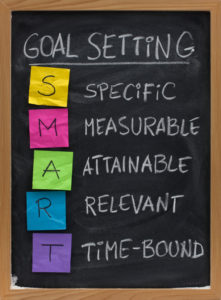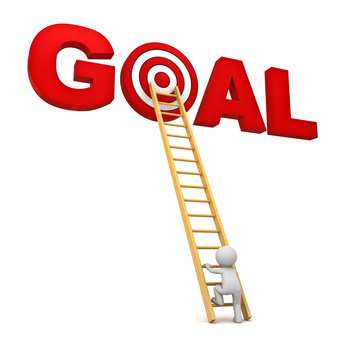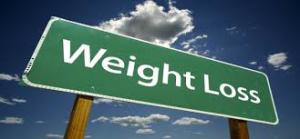You have permission to sit down to read this post as it’s a little longer than usual, yet well worth your time. Then you need to get up and get going!
sedentary [sed-n-ter-ee]
adjective
- Accustomed to sit or rest a great deal, or to take little exercise.
- Characterized by or requiring a sitting posture: “a sedentary occupation.”
- Doing or involving a lot of sitting: not doing or involving much physical activity.
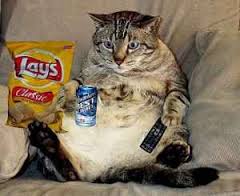 If you’re trying to lose weight, or want to enrich your physical condition, being sedentary is NOT the way to help your cause or improve your health. But you already knew that, right? So instead of simply stating the obvious, let’s clarify something. Unless you have a medical condition that requires you to be sedentary, or you’re rehabbing an injury, you have NO excuse!
If you’re trying to lose weight, or want to enrich your physical condition, being sedentary is NOT the way to help your cause or improve your health. But you already knew that, right? So instead of simply stating the obvious, let’s clarify something. Unless you have a medical condition that requires you to be sedentary, or you’re rehabbing an injury, you have NO excuse!
Losing weight isn’t easy, so don’t make it harder on yourself by stacking the odds against you. On the flipside and with all due respect, losing weight isn’t hard (or doesn’t have to be difficult). You simply need a plan that you support with some new behaviors and better choices. And ultimately over time, your new healthy decisions will help you develop the habits & disciplines necessary to focus on your nutrition & exercise so you can get lean and stay fit.
If you’ve set a goal to leave the sedentary lifestyle behind so you can lose weight and improve your health, then walking would be a great start. But only after your doctor has given you the okay. As a disclaimer, I’d suggest that you consult your primary care physician before stepping up your activity level or starting an exercise regimen.
Researchers say you should aim for at least 30 minutes of exercise on all or most days. Dr. Mehmet Oz recommends 10,000 steps per day as a way to improve your health. And while I agree, I think it’s important to note that walking is only one element for improving your health & wellness.
When walking becomes part of your daily routine, your endurance & energy will improve in a short period of time. As you progress, you can increase the distance, along with your pace, your time, and the incline (or resistance).
 10,000 steps will take deliberate action and conscious planning. And not only is it doable, the upside includes improved health & wellness – but only if you want it and put in the effort. I personally prefer the oudoors for walking, but a treadmill is a great alternative for the times of year or when the weather isn’t cooperating.
10,000 steps will take deliberate action and conscious planning. And not only is it doable, the upside includes improved health & wellness – but only if you want it and put in the effort. I personally prefer the oudoors for walking, but a treadmill is a great alternative for the times of year or when the weather isn’t cooperating.
Depending on your situation, you can quickly move into other aerobic (cardio) training after a few weeks, which will help you burn some significant calories. I would also recommend that you incorporate some basic anaerobic (strength) training exercises as well to start building lean muscle and contribute to your calorie burn. It really comes down to using some common sense, getting back to basics and challenging the boundaries of your comfort zone.
I was surprised to read in a recent article how leading a sedentary life can lead to so many debilitating diseases. This includes but is not limited to diabetes, heart disease, high blood pressure (hypertension), elevated triglycerides, abnormal cholesterol levels, insulin resistance, and obesity. Being sedentary can also affect memory, sleep, and feelings of anxiety & depression.
It’s mind boggling because these life-threatening conditions are SO avoidable and preventable. And it all starts with activity. YOU’VE GOTTA MOVE!!!
If you’re not sure what to do or need some guidance to break the inertia, you have many options. There are plenty of online resources. You can also hire a personal trainer or speak with fitness and nutrition professionals for ideas.
So seek out advice for burning calories and eating nutritiously. These professionals can provide ideas based on your goals and the latest science behind cardio and strength training. You should also find out if your gym offers group classes which can help you get started. Whatever you decide on, take the first step. You’ll feel great when you take action and start building momentum.
Keep in mind, you may need to try a variety of different things until you find a few exercises that you enjoy and can do for the long term. It’s for your own good, so make it a habit to exercise, even when you don’t feel like it. It’s a small price to pay with a huge payoff.
The second point I want to make here is that you need to move all the time. You want to become the exact opposite of an unhealthy, over-weight couch potato.
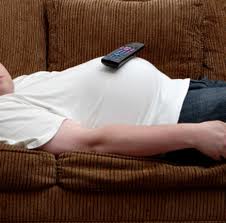 Your 30-minute cardio or strength training sessions 3 to 5 days a week are essential for keeping your heart healthy, in addition to helping you achieve your weight-loss goal by burning a lot of calories. However, what’s often overlooked is what you’re doing (or not doing) outside of the gym.
Your 30-minute cardio or strength training sessions 3 to 5 days a week are essential for keeping your heart healthy, in addition to helping you achieve your weight-loss goal by burning a lot of calories. However, what’s often overlooked is what you’re doing (or not doing) outside of the gym.
Are you sitting for extended periods of time behind a desk? Or wasting hours on the couch in front of the TV? That’s the sedentary part I want to address.
For example, have you ever asked someone in another room to bring you something, like a glass of water or cup of coffee instead of getting off your butt to get it yourself? Or is there something upstairs that you need, but instead of getting it yourself you ask someone else to grab it for you? Or maybe you put it off until you finally make it upstairs hours later? C’mon, that’s just LAZY.
Nike said it best, “Just Do It!”. So why don’t you? You can do it. Remember those 10,000 daily steps? Well, they don’t just happen by accident or happen on the couch. You have to be deliberate and force yourself to move. And then it becomes a habit; part of your lifestyle.
25 steps to the kitchen isn’t going to burn any calories to speak of. But it’s the act of moving and staying active that results in the real benefit. Get the mail, take out the trash, walk the dog (longer than usual), take a stroll around the block a few times; whatever makes you happy and gets you up and about.
Hey, you can even walk to the store or walk to the gym instead of driving, as long as it’s safe and you have a path. Wouldn’t that be different and interesting? I started doing this after returning from a vacation to Europe where we did a ton of walking. Not many are doing it back here in America. Maybe you can start a new trend.
And if you want to start tracking your steps, there are plenty of app’s to choose from. I’ve been using the Breeze app (from FitnessKeeper, Inc.) on my iPhone for the past 6 months and it does the job pretty well. There are plenty to choose from including the old fashioned pedometer.
Here are a few additional resources to help you get moving. Check out:
- Denise Austin’s 8 Ways to Burn More Calories Every Day.
- LifeHacker’s How to Burn More Calories Through the Day.
- Canyon Ranch’s 8 Ways To Move More.
- SparkPeople’s 9 Ways to Get 10,000 Steps a Day.
- And finally, here are 8 simple ways to increase your movement every day:
- Walk up or down the stairs instead of taking the elevator.
- Get a headset and walk around while talking on the phone.
- Limit the amount of time you spend watching TV.
- Integrate a treadmill desk or bike desk into your office.
- Have walk-and-talk meetings.
- Get a walking buddy.
- Walk or ride your bike to work.
- Replace video games with activity-promoting games.
Good luck in your quest to be healthy & fit!







